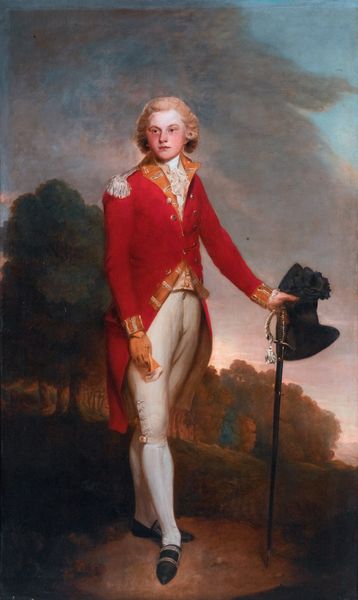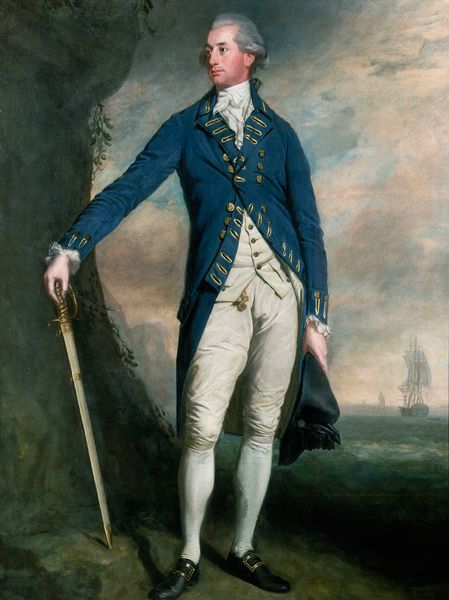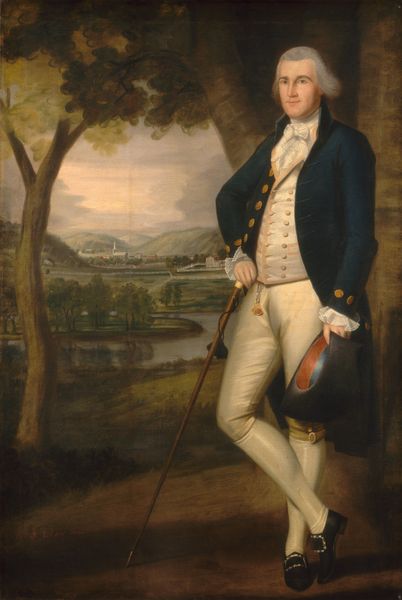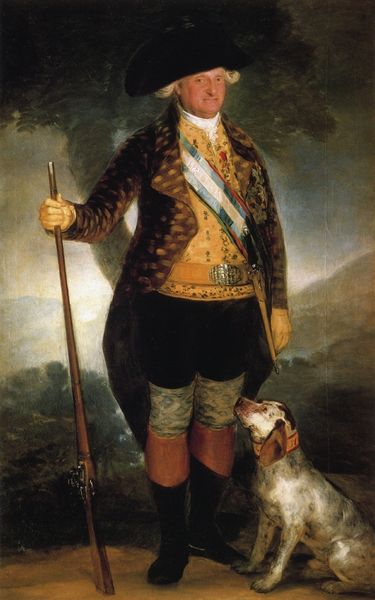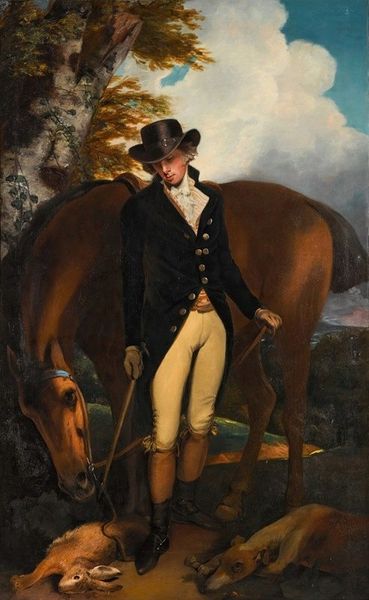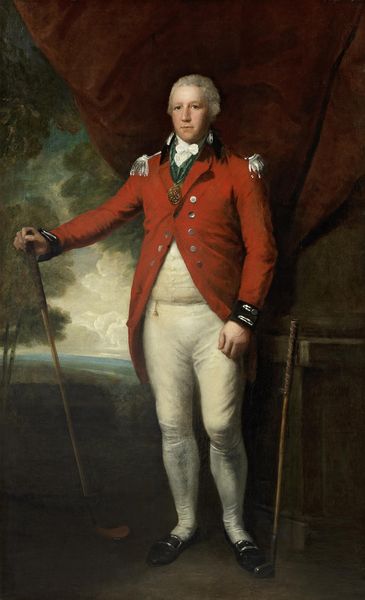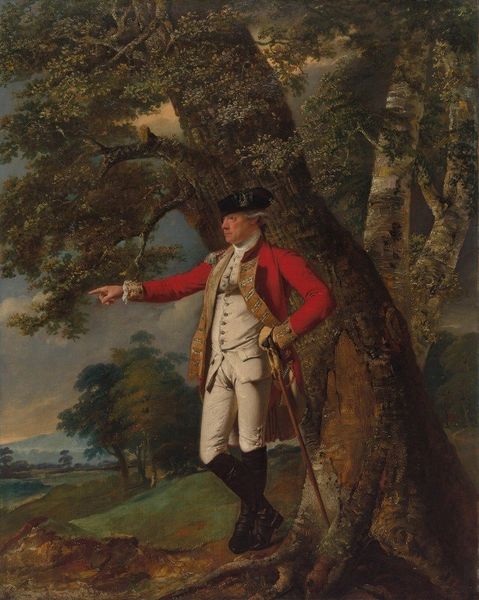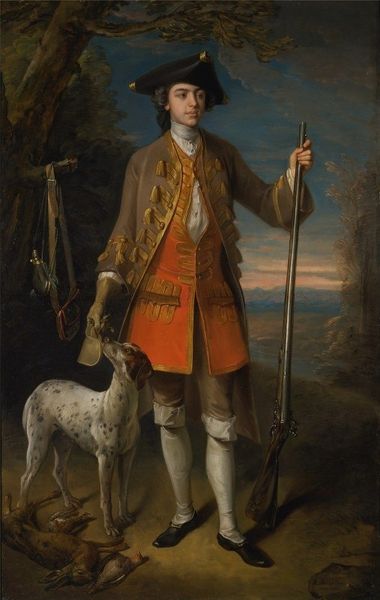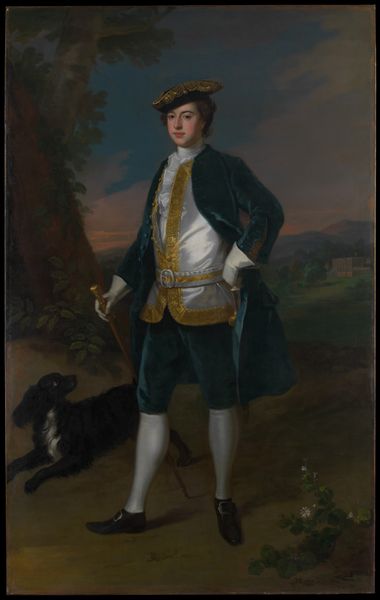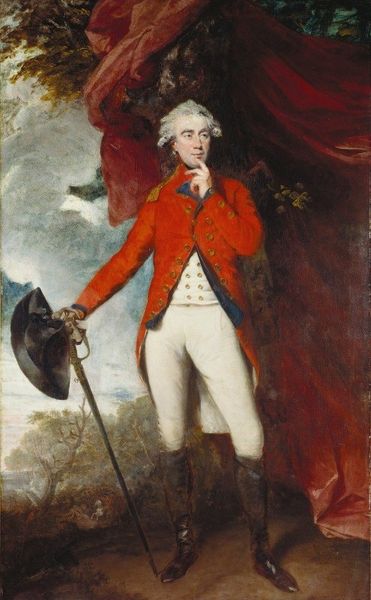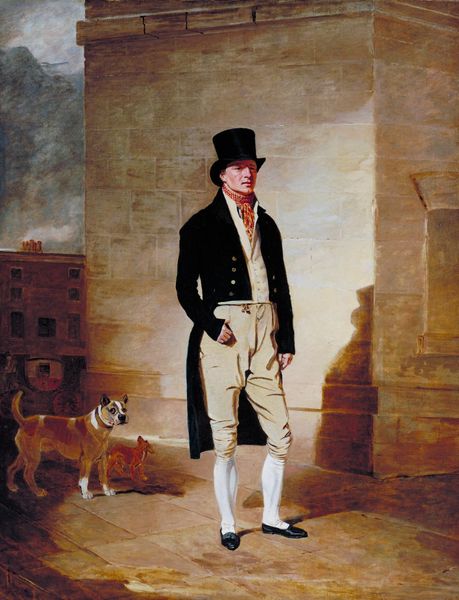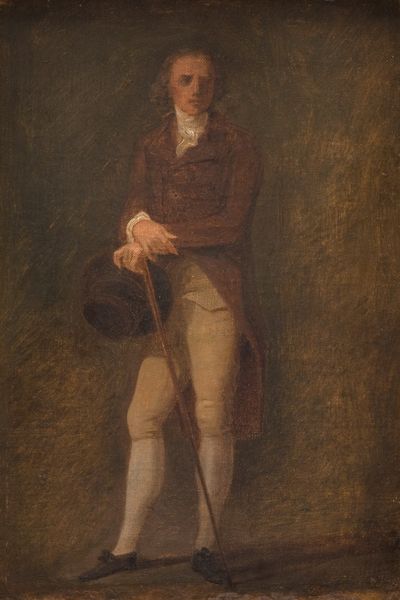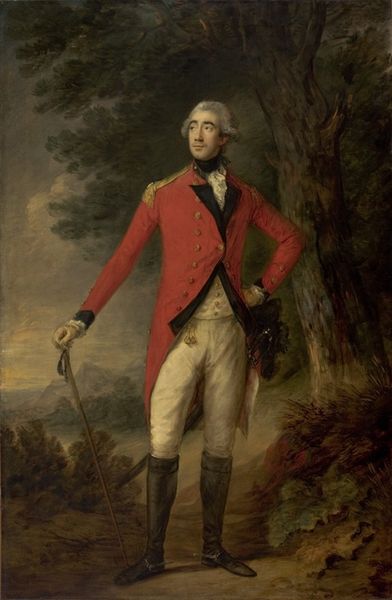
painting, oil-paint
#
portrait
#
painting
#
oil-paint
#
landscape
#
figuration
#
romanticism
#
history-painting
Dimensions: 240 x 148 cm
Copyright: Public domain
Editor: We're looking at a painting, Portrait of Alexander Keith of Ravelston, Midlothian by Henry Raeburn. It appears to be an oil painting, depicting a gentleman outdoors. It feels…staged, almost theatrical, with the dramatic lighting. What's your interpretation of this piece? Curator: It's interesting that you say 'staged'. Raeburn's portraits, while seemingly straightforward depictions of Scottish gentry, operate within a complex visual and social framework. The Romantic style in painting was becoming popular, and the work blends portraiture with landscape elements, blurring the line between the individual and his environment, speaking to new ideas of liberty at the time, linking his self-image with land ownership. Note the prominent placement of the walking stick and consider how class and identity were tied to notions of masculinity and access to the natural world. Where does Keith belong within Scotland's changing social structure? Editor: So, you're saying the backdrop isn’t just decorative but part of the statement? The landscape feels wild, contrasting with his formal attire, like he's posing within nature. Curator: Precisely! Consider the power dynamics at play. Raeburn wasn't just painting a likeness; he was constructing an image that reinforced Keith’s status within a very specific societal hierarchy and moment in time, linking wealth with an untamed Scotland. Does his expression offer a key to his sense of privilege or burden? Editor: I see it now. The backdrop and his outfit creates an artificial and constructed view of his masculinity within this social strata. I never would have thought about that at first glance. Curator: Art becomes richer when we unpack the social and political baggage it carries, reflecting the times and its intricate historical narratives.
Comments
No comments
Be the first to comment and join the conversation on the ultimate creative platform.
